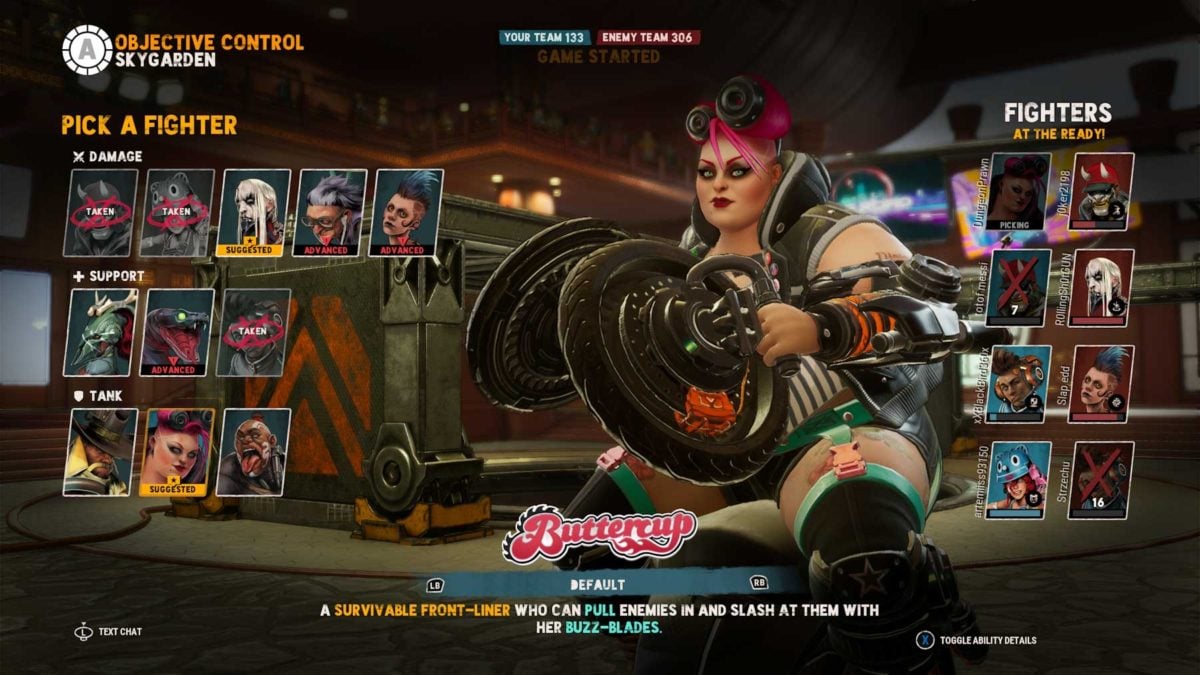Bleeding Edge review: Dull Game Pass fodder
5 min. read
Published on
Read our disclosure page to find out how can you help MSPoweruser sustain the editorial team Read more

Our Bleeding Edge review was written by our new work experience intern Paddy Inniss.
Despite its intense name, Ninja Theory’s new hero shooter Bleeding Edge fails to make a noticeable cut in the vast market of multiplayer competitors. While it’s strong artistic designs make a decent first impressions, blunt combat leaves you with an unoriginal game that fails to leave an impact.
With acclaimed Hellblade developer Ninja Theory behind the wheel, one would expect great things from their first title since. Unfortunately, Bleeding Edge’s blade is dull, despite its few saving graces.
The amount of attention and detail that has gone into unique character designs and their individual abilities is by far the best aspect of Bleeding Edge. Ninja Theory have built a setting that screams high-tech dystopia, an aesthetic that’s brilliantly matched with the cobbled together cybernetic enhancements of its colorful cast.

Bleeding Edge’s heroes and their augments never feel clean and sophisticated – very much cobbled together, that helps to build some story to the world. If Overwatch’s team of heroes and villains are the influential Bigweld, the varied scrapper teams of BE are more of a Fender Pinwheeler. Again, like Overwatch, these characters are surface-level interesting but outside of short biographies we don’t get to learn anything about them or the world they live in; expanded lore in the future would make us care a helluva lot more.
[shunno-quote]With combat having all the impact of a wet leaf in a light breeze, Bleeding Edge feels muddled [/shunno-quote]
In terms of combat, NT have mostly shied away from guns and ranged weapons, instead focusing on melee attacks and combos. Mashing the attack button a few times will initiate a combo that locks enemies in place, unless they take advantage of the evade or parry system. Players have the ability to evade out of devastating combos with a swift press of the left trigger, as long as they have enough stamina left. If your stamina is drained you can try for the high-risk-high-reward parry. The parry has a high skill level since it requires perfect timing, but when you pull it off you’re rewarded with a satisfying enemy stun that allows you to pull off devastating combos.
As well to your basic attacks, each character has three special abilities for different ranges: close up, ranged and area of effect. You can choose to use specific abilities on yourself or others which, for supporting characters, is especially useful as they have lower health. Two ultimates per hero, one offensive and one defensive, mix up the strategy depending on how the match is going with players having the ability to build multiple loadouts for each of the available heroes. Swapping loadouts can be done at any time during matches as long as you are in the spawn area.
Bleeding Edge’s Achilles Heel is, unfortunately, its foundations: it’s pretty bad when your Hero Shooter combat feels completely lackluster. It completely fails to make you feel like a hero. The game struggles to make your actions carry any weight during even the most hectic combat encounters; a complete lack of haptic feedback when dealing damage or taking damage doesn’t help.
[shunno-quote]It’s infuriating to play, provides very little gratification and there are far better options.[/shunno-quote]
With combat having all the impact of a wet leaf in a light breeze, Bleeding Edge feels muddled. It’s hard to tell when you’re actually damaging your enemies without staring at the bright-red health bar above their heads.
The game struggles to make your actions carry any weight during combat encounters. Surprisingly, there is no haptic feedback when dealing damage or taking damage. As a result, none of your attacks ever feel impactful, therefore its difficult to tell when you are actually damaging someone (when your attacks connect that is) this leaves kills not feeling earned and your deaths feeling undeserved.
Other messy fundamentals that fall flat on their face includes the game’s snail-race pacing. While each of the game’s standard collect-the-items and capture-the-point game modes ask you for speed, character movement speed is sluggish; maps aren’t that big yet it feels like an age to cross them. Ninja Theory did foresee this issue with the introduction of a hoverboard, yet that too feels incredibly slow and takes a long time to spawn.
Bleeding Edge may be free for Game Pass subscribers but in no way is that an incentive to play it. I genuinely can’t express how irate and bored it made me feel. Cool character designs and a nifty loadout feature are not enough to keep me hanging onto this game. It’s infuriating to play, provides very little gratification and there are far better options.








User forum
0 messages